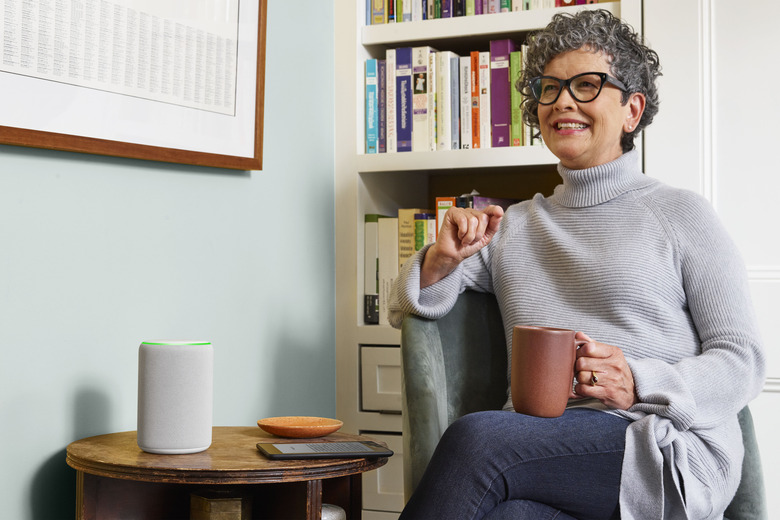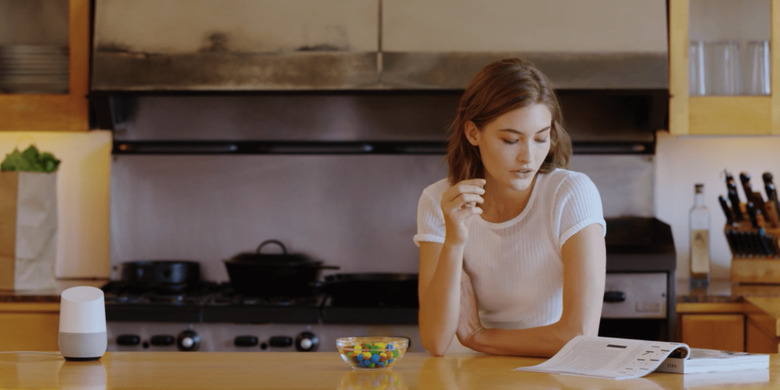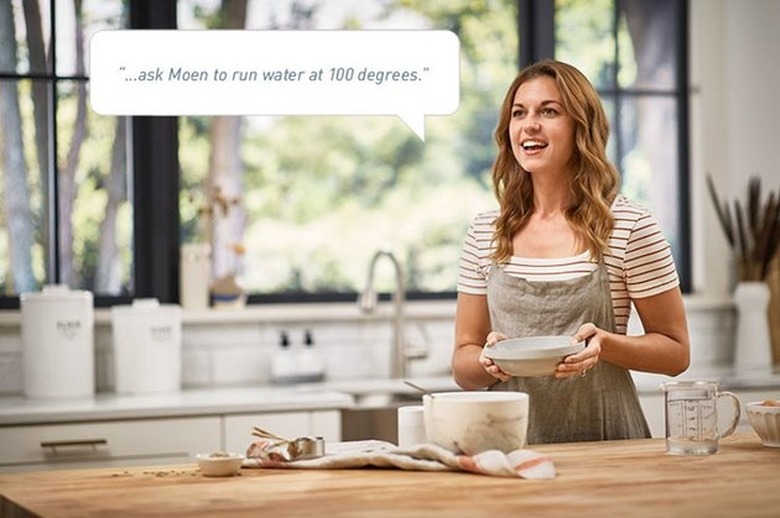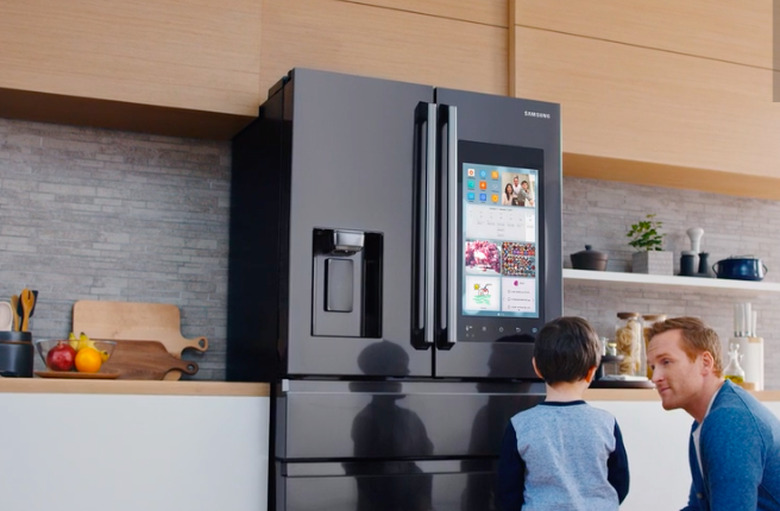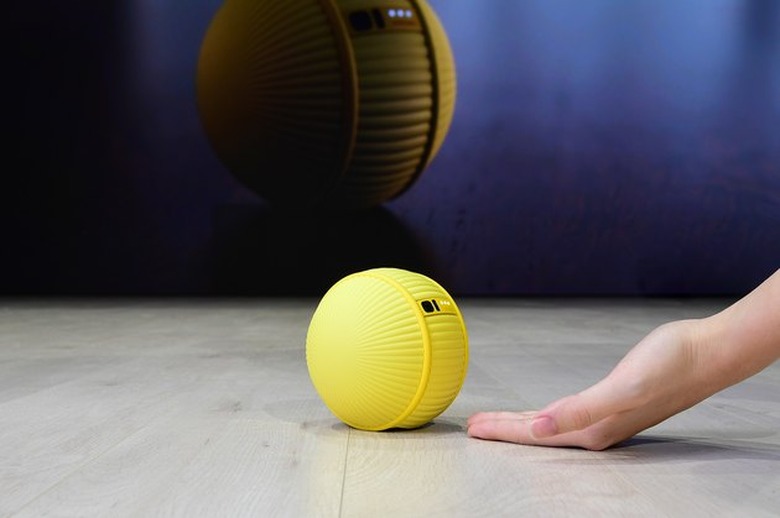Voice Activation In The Home Is Now Smarter — Is Emotional IQ Next?
We may receive a commission on purchases made from links.
In Google's much-discussed Super Bowl ad for Google Assistant, a screen shows someone typing into Google Search: "How to not forget." The scene zooms in on text from an article that reads "repeat a detail." Then, a man's voice asks: "Hey Google, show me photos of me and Loretta." As the story unfolds, the man gives commands like "Remember Loretta hated my mustache" and the screen shows a response that reads "Ok, I'll remember that."
The viewer pieces together that Loretta probably passed away recently and the narrator wants to keep memories of her safe. Google Assistant, this commercial seems to say, is the answer. At the end of the ad, the screen shows all the facts that the Assistant saved for the narrator.
Who knew we'd get here — to a time when we can turn to a virtual assistant not only to tell us the what today's weather will be or how many cups there are in a quart, but to become an extension of our own memory, the receptacle for our most important and self-defining moments?
According to Google, 500 million people use Google Assistant every month.
And they use it in more than 90 countries. That's a lot of "Hey Google" around the world.
We got hints here and there that one day we'd make it to this voice-activated reality. Take, for instance, pop culture. If American movies are any indication, we always dreamed about this kind of tech. In Back to the Future Part II, you can talk to your microwave ("hydrate level four, please") to get a tiny dehydrated pizza to become a cheesy, regular-sized treat. In The Jetsons, you can stop by a shop called U Rent a Maid where a salesman beckons each robo-maid by name ("Oh Agnes?"). The stakes got even higher in [Her](https://www.imdb.com/title/tt1798709/?ref=kw_li_tt)_ (2013), a movie in which a man (Joaquin Phoenix) falls in love with an operating system with a female voice (Scarlett Johansson).
In reality, things took a little longer to come to fruition. Nest debuted in 2010; SmartThings in 2012; Amazon Echo in 2014; and Google Home in 2016. These devices continue to change and adapt to our needs — even the ones that we purchase mostly to make our lives a little more convenient.
We're constantly running around, with multiple appointments and social media apps to divide our attention. It's a prime moment for home tech companies to sell us the idea of life being a little easier — at a more nuanced level than just a voice assistant telling us the weather outside. At CES 2020, Google announced a number of features for Google Assistant including "Scheduled Actions," which lets users give commands like "Hey Google, run the coffee maker at 6 a.m." The function will work across a variety of devices, like AC units and vacuums.
Mark Spates, Smart Speaker Product Lead at Google, has noticed a slight shift already in how people use Google home tech products.
"We've also seen people use their speakers and displays in other surprising ways, like asking for a daily dose of good news ("Hey Google, tell me something good"), learning new languages, and planning their next vacation ("Hey Google, what are fun things to do in Austin?")," Spates tells Hunker.
In the not-so-distant future, we also want voice-activated devices to respond to our requests in a more nuanced way. In 2019's Little, Jordan (Regina Hall) says goodbye to a guy she's hooking up with but wants out of her apartment. Still slightly giddy from being around him, she closes the door and says to the voice assistant she designed: "HomeGirl, play 'Put Me to Bed'" (a reference to J. Holiday's "Bed" tune), and the gadget responds, "You removed all love songs from your playlist." King responds: "Right, no softening" to which HomeGirl shoots back, "I tried to tell you."
This complexity doesn't seem too far from reality. Consumers know the basic tricks at this point, so it naturally follows that they want something more. Even though the Google Assistant in the commercial we reference above isn't as advanced as guessing the user's thoughts and needs, the ad still positions the Google Assistant system as a way to deal with very personal challenges and memories. It's something that goes beyond asking Google Assistant turn on an appliance or make an appointment on your calendar.
Shail Gupta, VP of Partnerships at Netomi, tells Hunker that Netomi (an AI customer service automation platform) has noticed, "a shift in terms of what experiences people are willing to use these types of devices for."
In 2019, the platform teamed up with WestJet to create a "digital travel assistant" that lets you ask questions like, "Hey Google, ask WestJet the flight status for WS123 today?" or "Hey Google, ask WestJet about traveling with my dog."
In the WestJet use, for example, voice activation becomes a means of reaching information outside of your home (not just using controls for the appliances inside of it). But that information is still very much tailored to your own schedule. Finding out random facts from a voice assistant was thrilling a few years ago, but asking it for flight details as you hurriedly pack your things put the tech in a whole different ball game.
According to a report by Grand View Research, the voice and speech recognition market will hit a value of $31.82 billion by 2025. Voice activation technology is steadily increasing in the home — but the evolution of voice technology isn't limited to assistants. Just recently, Moen introduced U by Moen, which works through Alexa or Google Home. Kohler also created the Sensate Touchless sink.
We're living in a voice activation dream, realized. But is it fully there yet? And what are the consequences of satisfying all our tech-filled fantasies?
"The way I see it is in the home in the future — in addition to everything being connected and you having the ability to interact with your home in a more personal manner — what voice adds is, it gives you a functionality without a screen in front of you," Brian Edelman, co-founder of RAIN agency, tells Hunker.
The voice and conversational AI tech firm focuses on guiding clients on how to be strategic about using this tech, helping them to "build a voice interface." Edelman says that just as many brands "adapted to mobile over time," RAIN believes that many businesses and brands will soon "have a voice strategy."
Our homes are prime spaces for that. Pinterest's 2020 trends report found that users are interested in creating a "home hub." Searches for audio rooms, for example, went up by 803% and home theaters by 368%. If we spend more time at home, it follows that convenience would appeal to us — and voice automation definitely fits into that mold.
For instance: Why get up from your comfy home theater or audio room for a snack? In 2017, Panasonic debuted a prototype for a refrigerator that would respond to commands like "Fridge, come here." This type of tech isn't quite as personable — it's not like your fridge will learn your habits — but it points to another facet of voice activation, which is the upgrading of appliances.
Samsung's Family Hub French Door Smart Refrigerator was designed to respond to phrases like "Play Pandora" and "Show us what's inside." The fridge, an item once used to just make sure our food wouldn't go bad, suddenly becomes a means of entertainment and information (like looking up recipes). Why the fridge? Alexandra Deschamps-Sonsino writes in Smarter Homes: How Technology Will Change Your Home Life (2018) that the refrigerator makes sense as an early attempt at high-tech home appliances. "This kitchen appliance hadn't changed since the 1950s but had evolved in its capacity and design," Deschamps-Sonsino writes. "It became larger, double-doored, and presented an 'empty surface' to take advantage of ... it became the first victim of an appliance-centric view of internet technologies."
Of course, different functionalities have a range of priorities for users. Do you really need your fridge to play music when you've already got other devices for that? Will you actually use it to look up recipes when you have your favorites saved on your phone or tablet? In some ways, it's still too early to tell.
"I don't know that some of these assistants have really hit their stride yet," Briana Brownell, founder and CEO of Pure Strategy Inc, tells Hunker. "Some of them are more in the gimmick stage — where it's cool and it's neat and people want to try it. But it's not really necessarily solving a real problem that people have."
In addition, safety issues aren't far from the minds of some consumers. Wired reported that in 2019, researchers discovered a way to use lasers to hack voice assistants. That same year, a couple in Milwaukee said that someone started speaking to them through their Nest and played "vulgar" music. Brownell says that 10 years ago people didn't seem to realize negative consequences of "data being shared across companies" but they're more aware of it now.
Another challenge: getting used to these new setups. For starters, it can get confusing if all your appliances are not on the same system — or even the same switches. This led to the creation of gadgets like the LIFX light switch, which allows consumers to control LIFX smart lights but also "dumb" lights, aka your standard, non-techy ones.
Brownell calls out this lack of "inter-operability," meaning, "you don't have a central area where everything can connect to," particularly across devices. And while some voice-activated technology can help with accessibility or makes things easier for elderly people, there are limitations. The market is still trying to figure out what will truly create demand.
Plus, there's the question of budget. With hefty price tags, the consumer needs reassurance that the smart home gadget will not just make their lives more convenient, but that it will add value for years to come.
"The smart home concept has moved past the crucial early-adopter phase in which manufacturers could charge whatever the market would bear, and consumers are now seeking smart functionality without the premium price tag," Adam Juniper writes in The Smart Smart Home Handbook: Control Your Home With Your Voice (2018). Like our other tech gadgets — iPhones, Fitbits, etc. — we need to fully believe that the purchase is worth the investment. Juniper notes that high-tech fridges currently cost about double the price of your regular old appliance.
"[Voice activation] is still in the early phases, where companies are still trying to work out what new product that everybody has to have is going to be," Brownell says.
So what can we expect in the not-so-distant future? A large part of it has to do with user behavior and consumer preferences — not to mention housing prices.
"The prospect that most young people cannot afford to own a home or furniture speaks volumes about the upcoming crisis in the world of the smart home," writes Deschamps-Sonsino. "If no one is there to cook, what's a smart kitchen for?"
We guess you could use your fridge to Google local listings.
If CES 2020 is any indication — it included Ballie, a high-tech ball by Samsung that's a "rolling robot that understands you, supports you, and reacts to your needs to be actively helpful around the house" — we're really just getting started when it comes to voice-activated home tech. Besides the Ballie feeling like a gimmick, anyone who has watched enough Black Mirror can conjure up a million ways for the tech to go wrong. What if Ballie refuses to unlock your door? What if it gets confused about what time you wake up and starts playing yoga videos at full volume at four in the morning?
But maybe that's the risk we take if we want voice-activation tech that's more sensitive to our wants and needs, and not just gadgets that can search the internet for when the nearest sushi restaurant opens. If tech continues on this route, the home of the future might be filled with high-tech members of the family — all of them predicting our whims and making sure the coffee is hot when we wake up in the morning.
